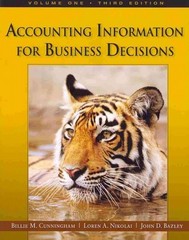Answer all questions
NP 11.5 Overhead Variances LID 2, 6, Appendix Europa Sugar processes sugar beets into granulated sugar that is sold to food companies. It uses a standard cost system to aid in the control of costs and for performance evaluation. To compute the standards for next year, the actual expense incurred by expense category is divided by the number of tons of sugar beets processed to arrive at a standard cost per too. These per-ton standards then are increased by the expected amount of ination forecast for that expense category. This year, Europa Sugar processed 6.3 million tons of beets. The calculation of next year's standard costs is as follows: Europa Sugar Standard Costs for Next Year (thousands of euros) This Year's Cost per marlon Standard Cast Cast Tan Adjustment per Tan Direct labor 6 33,000 670.524 4.096 {30.544 Sugar beets 53.000 0.921 3.5 0.9'53 Variable overhead 24,000 0.331 5.0 0.400 Fixed overhead 3,000 0.633 2.0 0.696 Total 153,000 62.509 E2503 Next year, actual production is 6.8 million tons. At the end of next year, the following report is prepared: Europa Sugar Actual Results compared to Standard Next Year (thousands of euros) Actual Standard Cost Standard Variance Cost per Ton Cost Direct labor 8 33.100 80.544 36,992 1,103 U Sugar boots 64.829 0.953 64,304 25 U 1'v'oriohla overhead 28,21 I 0.400 2?,200 1,0] 'l U Fixed overhead 45.227 0.696 4?.328 2.031 F Total El 76.307 {32.593 El 76,324 E :13 U Senior management was not surprised at the small variances for labor and sugar beets. The processing plant has good operating controls and there had been no surprises in the sugar beet market or in the labor market. Its initial forecasts proved to be good. Management was delighted to see the favorable total overhead variance (ELDQDF = 1,011.19; + 2,101F). Although variable overhead was over budget, fixed overhead was below budget and more than offset the over-budget variable overhead. No major change had taken place in the plant's production technology to explain this shift (such as increased automation). Therefore, senior management was prepared to attribute the favorable total overhead variance to better internal control by the plant manager. a. What do you think is the reason for the overhead variances? b. Is it appropriate to base next year's standards on last year's costs








